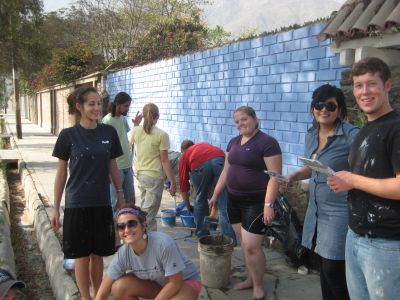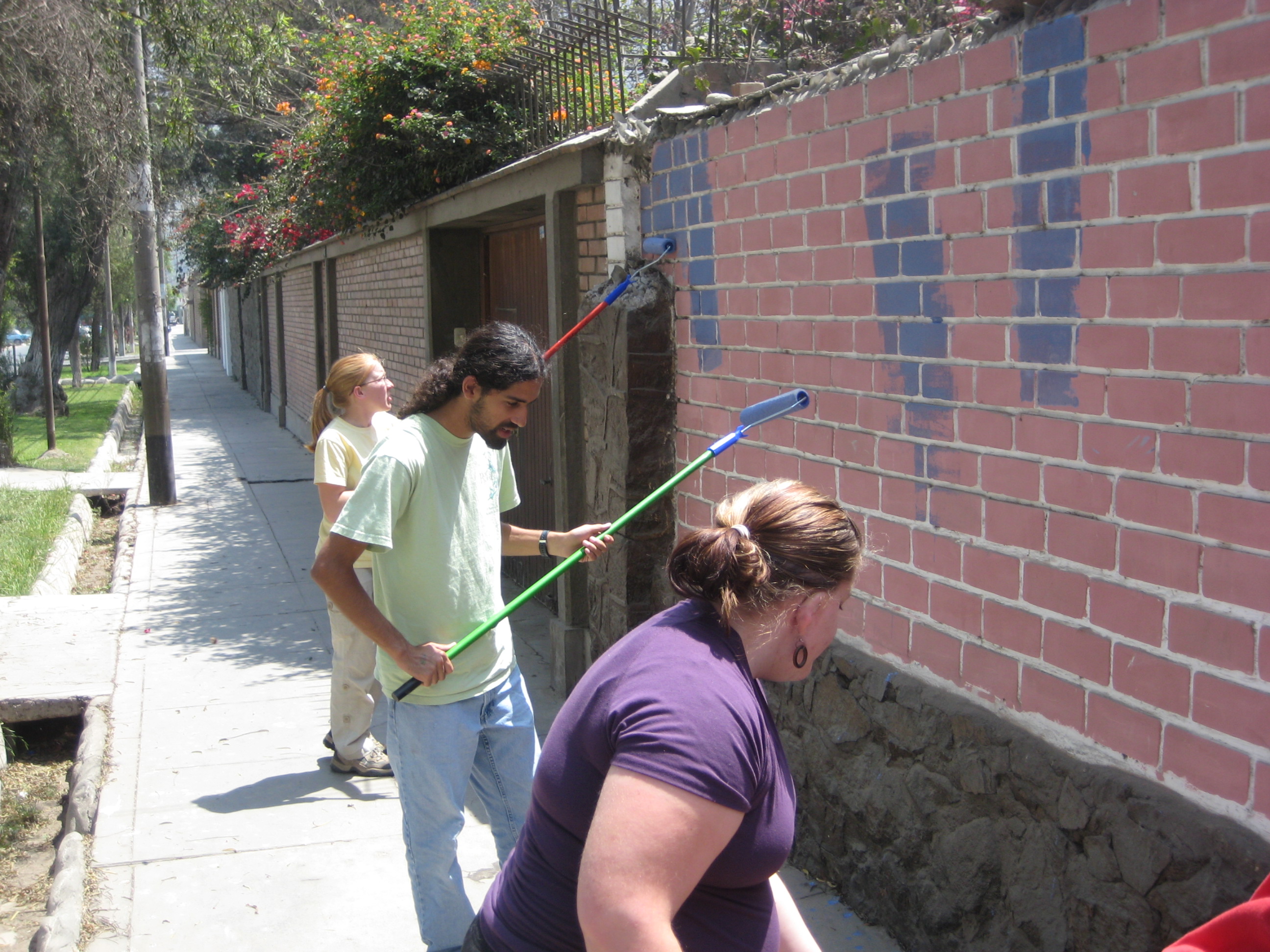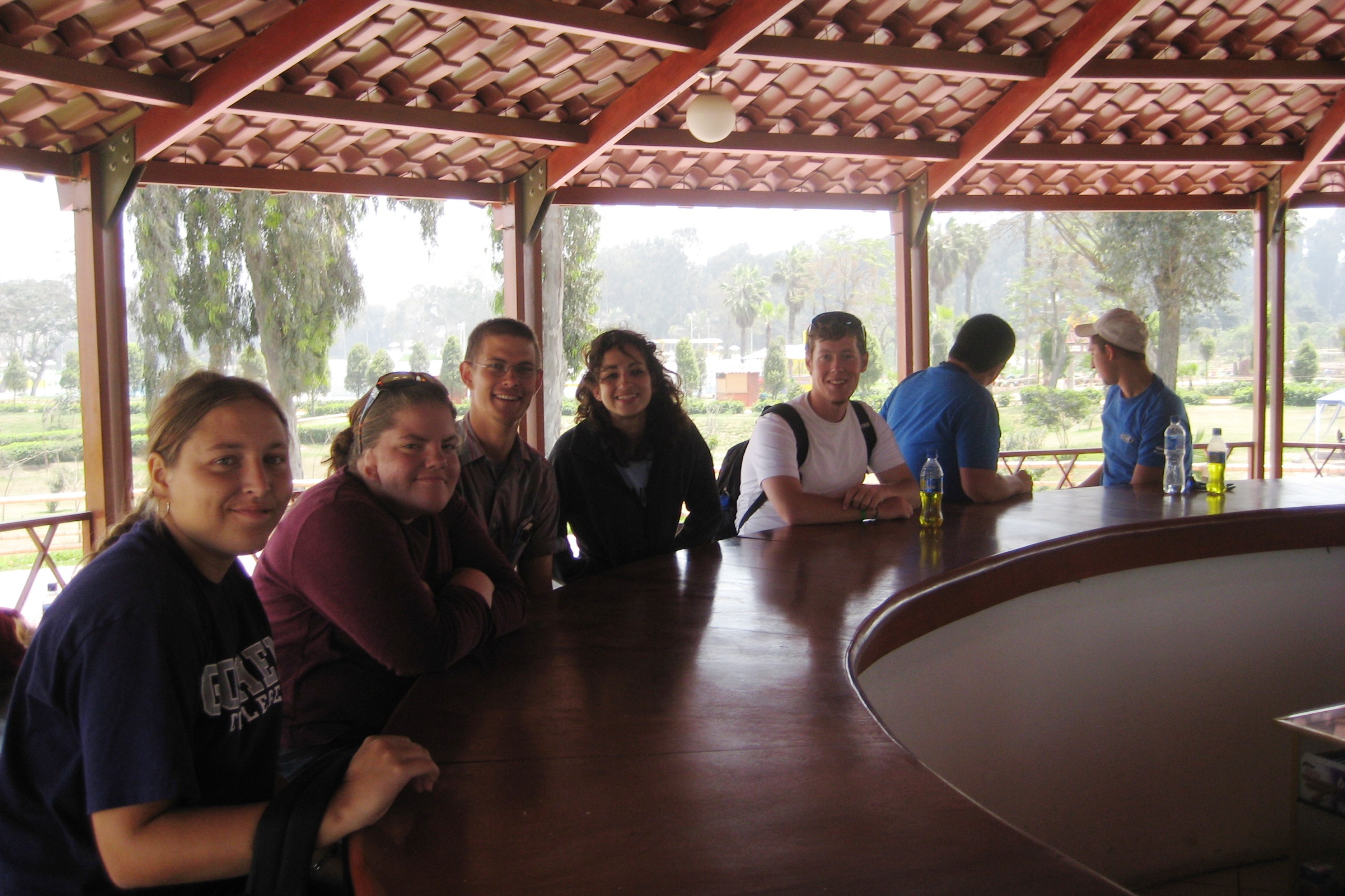We've got rhythm (and paintbrushes)

We’ve been busy here in Lima. In the last week we tried our hand(s) at the cajon, a wooden box-type drum that originated in Peru. Our instructor, Camilo Ballumbrosio, comes from a family of cajon players.
Our other guest speakers included Father David Farrell, a Massachusetts native who’s done social justice work throughout Central and South America since the 1970s, who spoke about our time in Peru and what it means in the context of liberal education. Father Jeff Klaiber, a specialist in the church and Latin America—and Indiana native who’s lived in Peru for 34 years—provided a great historical overview of the Catholic Church here. (The fact that students heard from two Catholic priests in a row was a bit of a scheduling coincidence, but it drove home the reality of much of Peru’s religious identity.)
After morning lectures and workshops—and lunch, of course—students head back into the classroom, where Spanish teachers Irene, Moises, and Bivi clarify the finer points of Spanish grammar and usage.
We’ve gotten out of the classroom quite a bit, too, starting with a visit to the nearby town of Chaclacayo, where the SSTers wielded paintbrushes and rollers to paint a small Christian school. The group was happy to soak up some sun for the day (Lima, true to its reputation for this time of the year, has been overcast and cool the last few weeks, while Chaclacayo has much brighter skies). We also visited a site that’s left out of the travel guidebooks: a water treatment plant in the southern part of the city.
Our final trip of the week was to Pachacamac, a museum and huge archaeological site just south of the Lima that dates as far back as 200 A.D. and remained in use (by various groups for various purposes, but most often as a religious center) for more than a millennium.





































































